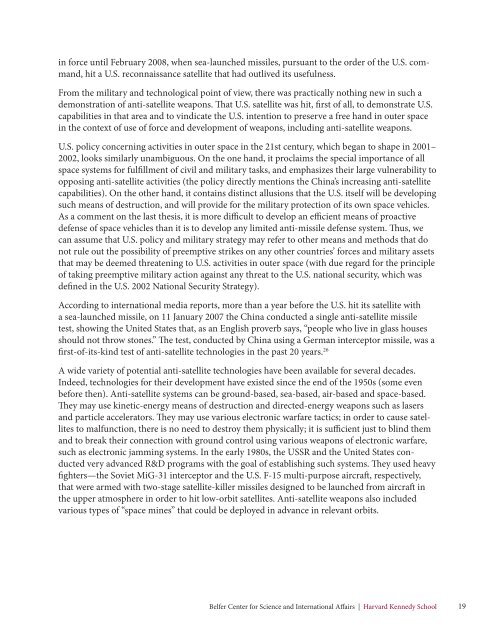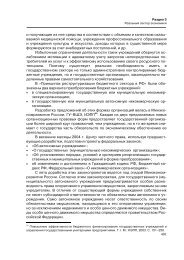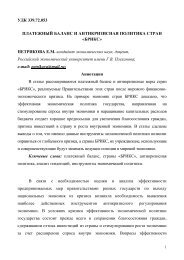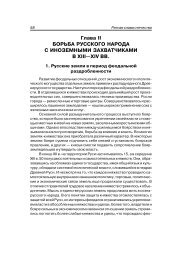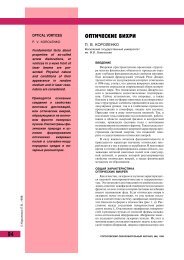Ensuring Strategic Stability in the Past and Present:
Ensuring Strategic Stability in the Past and Present:
Ensuring Strategic Stability in the Past and Present:
You also want an ePaper? Increase the reach of your titles
YUMPU automatically turns print PDFs into web optimized ePapers that Google loves.
<strong>in</strong> force until February 2008, when sea-launched missiles, pursuant to <strong>the</strong> order of <strong>the</strong> U.S. comm<strong>and</strong>,hit a U.S. reconnaissance satellite that had outlived its usefulness.From <strong>the</strong> military <strong>and</strong> technological po<strong>in</strong>t of view, <strong>the</strong>re was practically noth<strong>in</strong>g new <strong>in</strong> such ademonstration of anti-satellite weapons. That U.S. satellite was hit, first of all, to demonstrate U.S.capabilities <strong>in</strong> that area <strong>and</strong> to v<strong>in</strong>dicate <strong>the</strong> U.S. <strong>in</strong>tention to preserve a free h<strong>and</strong> <strong>in</strong> outer space<strong>in</strong> <strong>the</strong> context of use of force <strong>and</strong> development of weapons, <strong>in</strong>clud<strong>in</strong>g anti-satellite weapons.U.S. policy concern<strong>in</strong>g activities <strong>in</strong> outer space <strong>in</strong> <strong>the</strong> 21st century, which began to shape <strong>in</strong> 2001–2002, looks similarly unambiguous. On <strong>the</strong> one h<strong>and</strong>, it proclaims <strong>the</strong> special importance of allspace systems for fulfillment of civil <strong>and</strong> military tasks, <strong>and</strong> emphasizes <strong>the</strong>ir large vulnerability tooppos<strong>in</strong>g anti-satellite activities (<strong>the</strong> policy directly mentions <strong>the</strong> Ch<strong>in</strong>a’s <strong>in</strong>creas<strong>in</strong>g anti-satellitecapabilities). On <strong>the</strong> o<strong>the</strong>r h<strong>and</strong>, it conta<strong>in</strong>s dist<strong>in</strong>ct allusions that <strong>the</strong> U.S. itself will be develop<strong>in</strong>gsuch means of destruction, <strong>and</strong> will provide for <strong>the</strong> military protection of its own space vehicles.As a comment on <strong>the</strong> last <strong>the</strong>sis, it is more difficult to develop an efficient means of proactivedefense of space vehicles than it is to develop any limited anti-missile defense system. Thus, wecan assume that U.S. policy <strong>and</strong> military strategy may refer to o<strong>the</strong>r means <strong>and</strong> methods that donot rule out <strong>the</strong> possibility of preemptive strikes on any o<strong>the</strong>r countries’ forces <strong>and</strong> military assetsthat may be deemed threaten<strong>in</strong>g to U.S. activities <strong>in</strong> outer space (with due regard for <strong>the</strong> pr<strong>in</strong>cipleof tak<strong>in</strong>g preemptive military action aga<strong>in</strong>st any threat to <strong>the</strong> U.S. national security, which wasdef<strong>in</strong>ed <strong>in</strong> <strong>the</strong> U.S. 2002 National Security Strategy).Accord<strong>in</strong>g to <strong>in</strong>ternational media reports, more than a year before <strong>the</strong> U.S. hit its satellite witha sea-launched missile, on 11 January 2007 <strong>the</strong> Ch<strong>in</strong>a conducted a s<strong>in</strong>gle anti-satellite missiletest, show<strong>in</strong>g <strong>the</strong> United States that, as an English proverb says, “people who live <strong>in</strong> glass housesshould not throw stones.” The test, conducted by Ch<strong>in</strong>a us<strong>in</strong>g a German <strong>in</strong>terceptor missile, was afirst-of-its-k<strong>in</strong>d test of anti-satellite technologies <strong>in</strong> <strong>the</strong> past 20 years. 26A wide variety of potential anti-satellite technologies have been available for several decades.Indeed, technologies for <strong>the</strong>ir development have existed s<strong>in</strong>ce <strong>the</strong> end of <strong>the</strong> 1950s (some evenbefore <strong>the</strong>n). Anti-satellite systems can be ground-based, sea-based, air-based <strong>and</strong> space-based.They may use k<strong>in</strong>etic-energy means of destruction <strong>and</strong> directed-energy weapons such as lasers<strong>and</strong> particle accelerators. They may use various electronic warfare tactics; <strong>in</strong> order to cause satellitesto malfunction, <strong>the</strong>re is no need to destroy <strong>the</strong>m physically; it is sufficient just to bl<strong>in</strong>d <strong>the</strong>m<strong>and</strong> to break <strong>the</strong>ir connection with ground control us<strong>in</strong>g various weapons of electronic warfare,such as electronic jamm<strong>in</strong>g systems. In <strong>the</strong> early 1980s, <strong>the</strong> USSR <strong>and</strong> <strong>the</strong> United States conductedvery advanced R&D programs with <strong>the</strong> goal of establish<strong>in</strong>g such systems. They used heavyfighters—<strong>the</strong> Soviet MiG-31 <strong>in</strong>terceptor <strong>and</strong> <strong>the</strong> U.S. F-15 multi-purpose aircraft, respectively,that were armed with two-stage satellite-killer missiles designed to be launched from aircraft <strong>in</strong><strong>the</strong> upper atmosphere <strong>in</strong> order to hit low-orbit satellites. Anti-satellite weapons also <strong>in</strong>cludedvarious types of “space m<strong>in</strong>es” that could be deployed <strong>in</strong> advance <strong>in</strong> relevant orbits.Belfer Center for Science <strong>and</strong> International Affairs | Harvard Kennedy School 19


